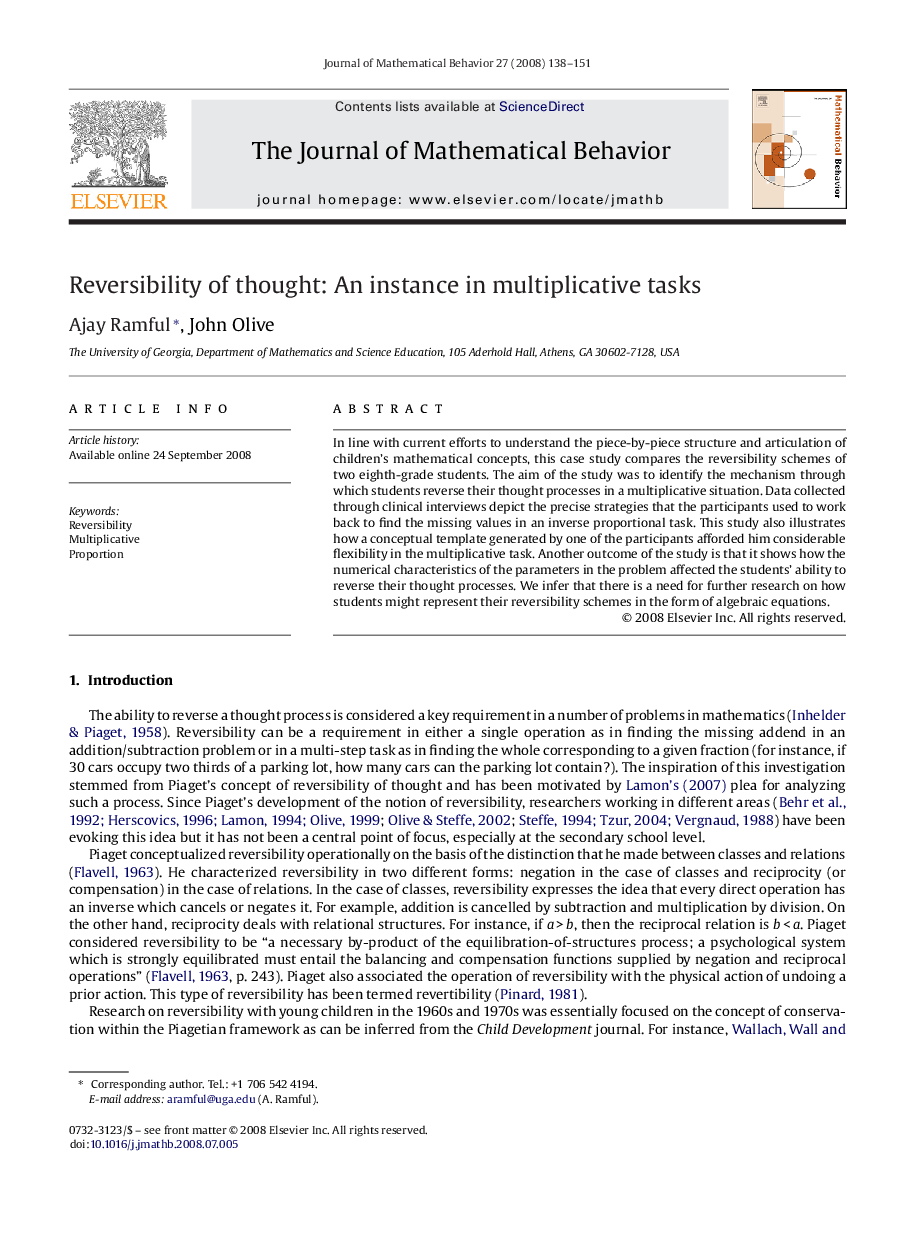| Article ID | Journal | Published Year | Pages | File Type |
|---|---|---|---|---|
| 360882 | The Journal of Mathematical Behavior | 2008 | 14 Pages |
In line with current efforts to understand the piece-by-piece structure and articulation of children’s mathematical concepts, this case study compares the reversibility schemes of two eighth-grade students. The aim of the study was to identify the mechanism through which students reverse their thought processes in a multiplicative situation. Data collected through clinical interviews depict the precise strategies that the participants used to work back to find the missing values in an inverse proportional task. This study also illustrates how a conceptual template generated by one of the participants afforded him considerable flexibility in the multiplicative task. Another outcome of the study is that it shows how the numerical characteristics of the parameters in the problem affected the students’ ability to reverse their thought processes. We infer that there is a need for further research on how students might represent their reversibility schemes in the form of algebraic equations.
